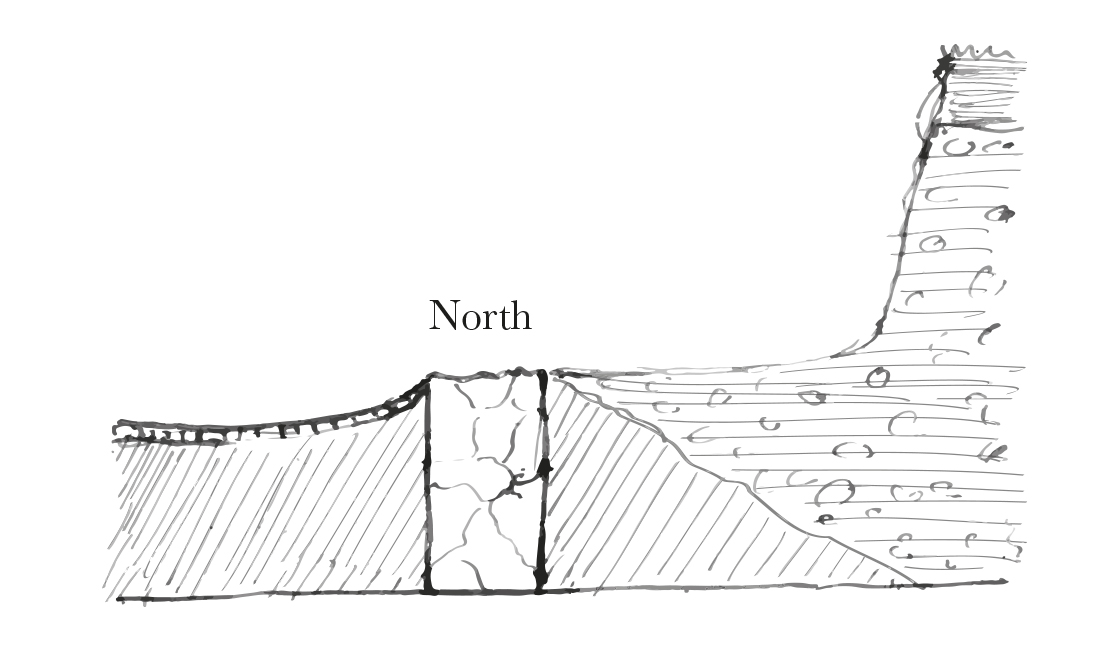From A. C. Horner 23 December 1881
Tonbridge
Dec. 23. 81
Dear Sir
I have just read your last work on “Worms”.1 I have presumed therefore to write to you. A few minutes acquaintance of your son in conjunction with my friend Dr Norman Moore may also be an excuse for doing so.2
At p. 10 & 105 you refer to worm castings in a cellar. I can corroborate that, as I have seen the same in my own cellar ((belonging to a very old house).
At p. 28 you seem to prove that worms do not emerge from ground by beating it.
I seem to remember very distinctly however that after or whilst lying down on grass that worms have emerged.3 At this time of the year however I should prefer not experimenting in that way.
At p. 43 you mention the boa constrictor as bathing its prey with saliva. You do not say that you have seen it doing so. You probably therefore refer to what others have said.
Mr Arthur Nicols (F.G.S., F.R.G.S.) at a lecture on Snakes Oct. 27. 81 in the Grammar School of this town discredited any notion of the Boa-constrictor doing anything of the kind, and said that he had never been able to see anything like a “bathing with saliva”.4
At p. 121 you say that earth-worms are easily killed by salt-water. As you do not say that you have experimented on their egg-capsules with salt-water, I think that it still remains an open question whether they are also destroyed by salt-water.5
Whilst reading Chap. III at p. 129, it occurred to me that whilst in search of Coleoptera under stones, I very frequently have seen Mole-burrows (but in that case not my Insect friends).6 I can hardly doubt therefore that these burrows would cause the stones to subside, especially in grass fields where I have more often observed them.
At p. 153 you refer to Ants beneath stones. As ants, from my observations, seem to prefer dry to damp soil (which is the reverse of worms), I should expect that their action in causing subsidence would come into play at the points where worms left off.7
At p. 158—for “thoguh” read “though”8
At p. 214 (Fig. 14) & p. 220 it seems to me that either the diagram is incorrect or that your interpretation does not entirely explain its appearance as represented.
The layer of vegetable mould is clearly defined. Beneath it is a mass (25 inches thick) of “dark brown mould”. In the diagram the walls project into this “dark brown mould” on the north or upper side about half way (12 inches or more)
Now, if this state of “mould” had been brought about by long continued ploughing surely the ploughing would either have erased the wall or the wall would have prevented the ploughing to any depth below at least the present upper level of the wall, for ploughing could hardly be carried on close to and parallel with the wall.9
Supposing the diagram to be incorrect, I should expect to find the “mould” gradually shelving off from the upper surface of the wall to the full depth of 25 inches

Another thing that strikes me is that if your theory is correct, there ought to be both more and larger stones in the “mould” at the bottom than at the top near the “superficial mould”, but the diagram does not represent it to be so.
At p. 258—for “each of acre” read “each acre”.10
I have derived so much pleasure from your book, that I hope you will overlook my presumption in writing to you, and believe that my aim in doing so is truth in science, and a wish to help if possible others to arrive at it.
I remain, Sir | Yrs. faithfully | A. C. Horner
CD annotations
Footnotes
Bibliography
Correspondence: The correspondence of Charles Darwin. Edited by Frederick Burkhardt et al. 29 vols to date. Cambridge: Cambridge University Press. 1985–.
Descent: The descent of man, and selection in relation to sex. By Charles Darwin. 2 vols. London: John Murray. 1871.
Earthworms (1882): The formation of vegetable mould through the action of worms: with observations on their habits. By Charles Darwin. Seventh thousand (corrected by Francis Darwin). London: John Murray. 1882.
Earthworms: The formation of vegetable mould through the action of worms: with observations on their habits. By Charles Darwin. London: John Murray. 1881.
Summary
Detailed criticism of Earthworms.
Letter details
- Letter no.
- DCP-LETT-13578
- From
- Arthur Claypon Horner
- To
- Charles Robert Darwin
- Sent from
- Tonbridge
- Source of text
- DAR 166: 268
- Physical description
- ALS 10pp †
Please cite as
Darwin Correspondence Project, “Letter no. 13578,” accessed on 20 April 2024, https://www.darwinproject.ac.uk/letter/?docId=letters/DCP-LETT-13578.xml


